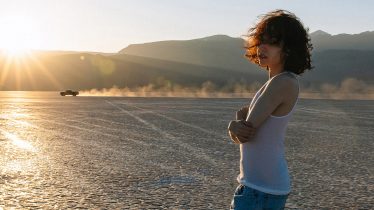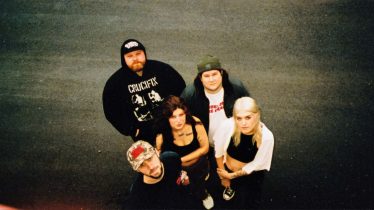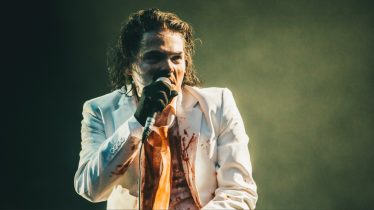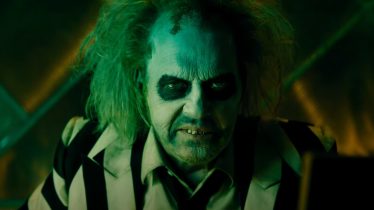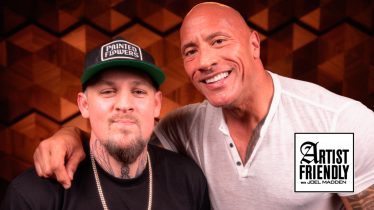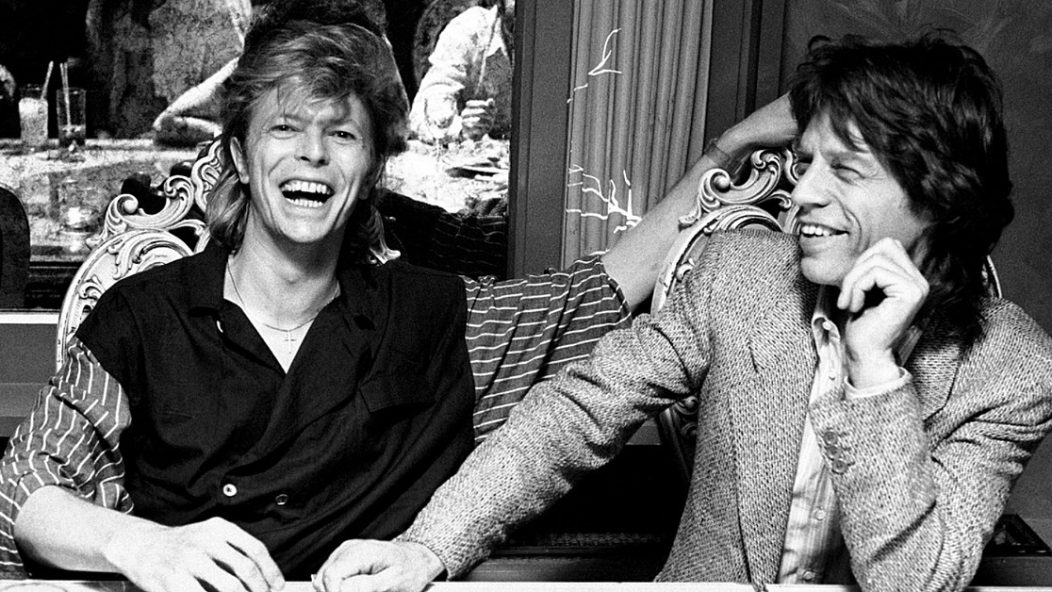
Denis O'Regan has photographed your favorite artists, including David Bowie, Amy Winehouse and Freddie Mercury
“To him, I wasn’t really there,” Denis O’Regan explains of his working relationship with David Bowie while capturing the star day in, day out for the duration of his grueling eight-month Serious Moonlight world tour in 1987.
It’s perhaps this level of near-invisibility O’Regan managed to cultivate with his subjects that made him the ideal candidate to hit the road with some of music’s most legendary stars, traveling the world with Bowie, Queen and the Rolling Stones, among others, throughout the ’70s and ’80s.
Read more: 15 ’80s songs that need to be in Stranger Things season 5
It’s true, many photographers will tell you, that key to success in the role is an ability to blend into the background and know your place among the stars. “I had an arrangement with David that if I wanted pictures [with other stars], instead of me asking if they would pose with him, David would ask because he knew that way they would never refuse,” he remembers.
Through employing these tactics of subtlety, O’Regan has amassed one of the most enviable portfolios in music photography history, capturing some of the industry’s most beguiling forces, such as Kate Bush and Amy Winehouse, at pivotal moments in their careers.
This year O’Regan is marking his 69th year in the business with an online exhibition aptly entitled 69 Days. On view at West Contemporary Edition’s site, the show includes a number of classic and previously unseen works from his repertoire of stars, including Bowie, Mick Jagger, Freddie Mercury and Bob Marley.
The works will also be available to buy as limited-edition prints, with a percentage of the proceeds going to London’s Great Ormond Street Hospital Children’s charity GOSH, allowing music fans the opportunity to get onto the art collector ladder at an affordable price.
Following the exhibition’s opening, we sat down with the photographer to chat about some of his most enduring images and to learn more about what was happening on either side of the lens on the fateful days they were taken.
Amy Winehouse (2007)
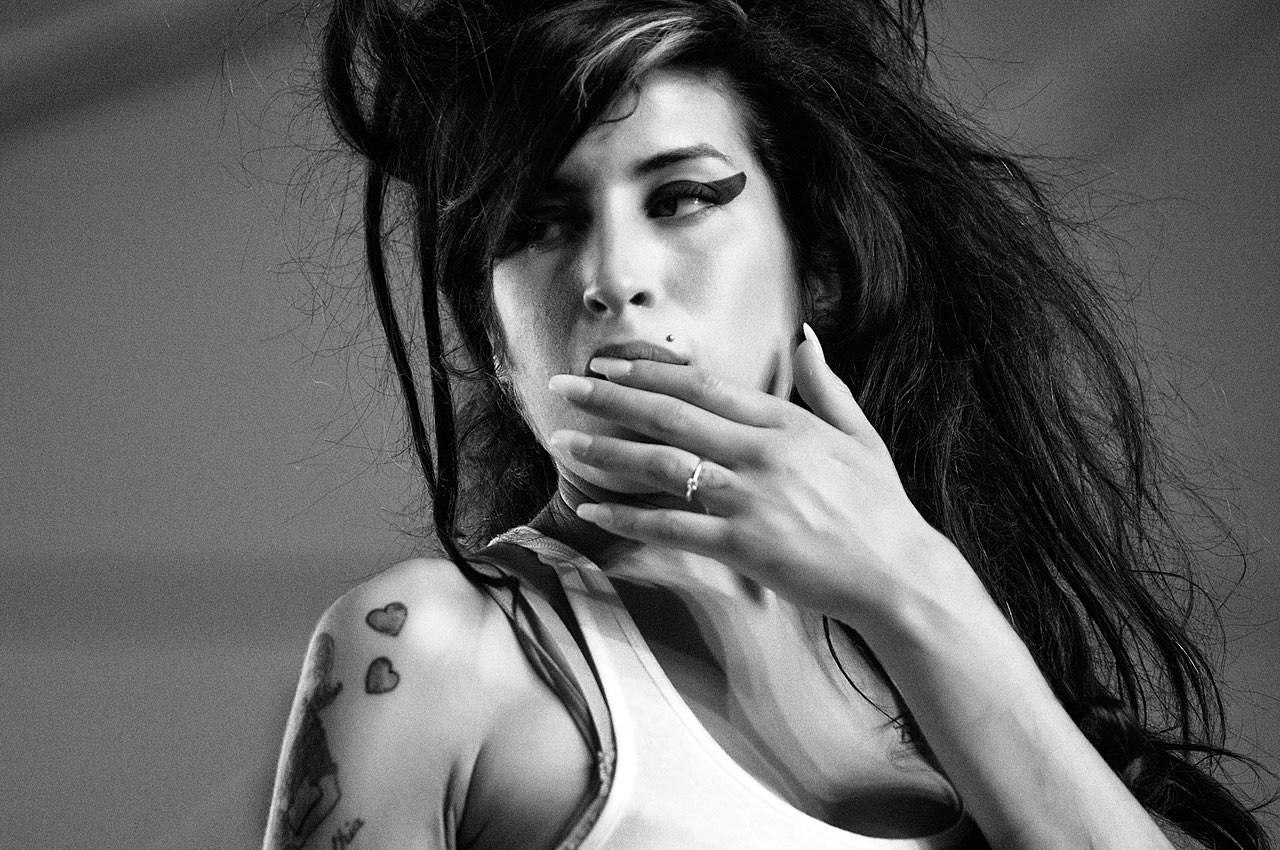
[Denis O’Regan/West Contemporary Editions]
I used to shoot Coachella because a lot of the artists from the U.K. would be lower down the bill in America because they hadn’t yet broken, so Amy was on at least the third stage at the back of the field. She was on her way up at this point — it was the era of her cut-off denim shorts. I just like the pose here, showing her tattoos, and her finger to her mouth that shows her engagement ring, which was a big story at the time. It doesn’t look like a live shot, but it is. The performance was good, but it was the beginning of that phase where she became noticeably thinner than would be attractive, I think. It was before I think she started to really fall apart later on.
David Bowie, Madonna, Billy Idol and Sam Kinison (1987)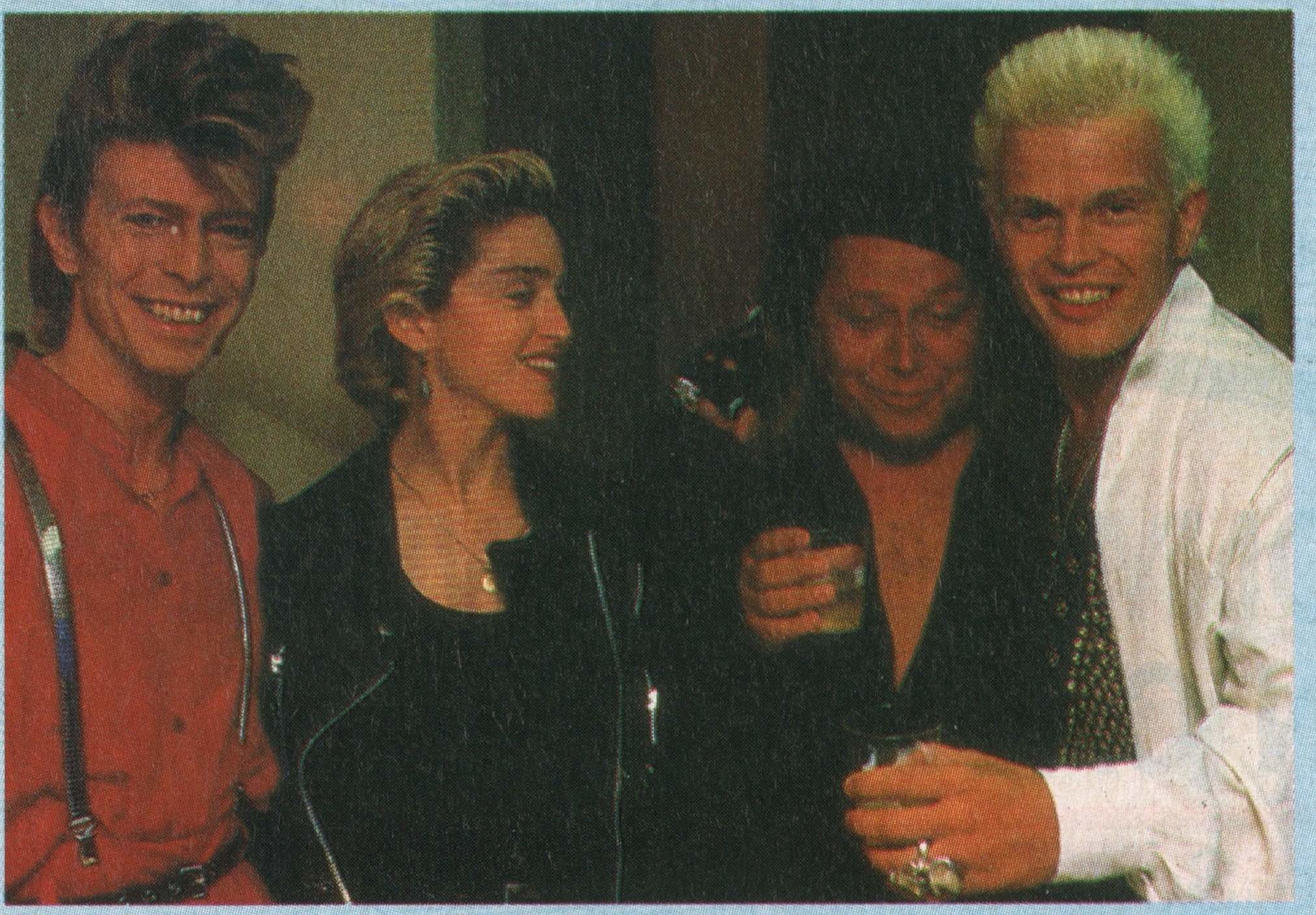
[Denis O’Regan]
This was backstage on his Serious Moonlight tour at Madison Square Garden in ’87. Madonna actually tweeted this photo when David died, which was quite flattering. That’s Sam Kinison, a wild comedian who only lasted a few more years, I think. He was great friends with David. Sometimes when I was with David in the room, he would just phone up Sam, and they’d have this off-the-charts crazy conversation. And then of course you have Billy Idol, looking pretty good there, I think. He’s taller than people think he is.
Bob Marley (1980)
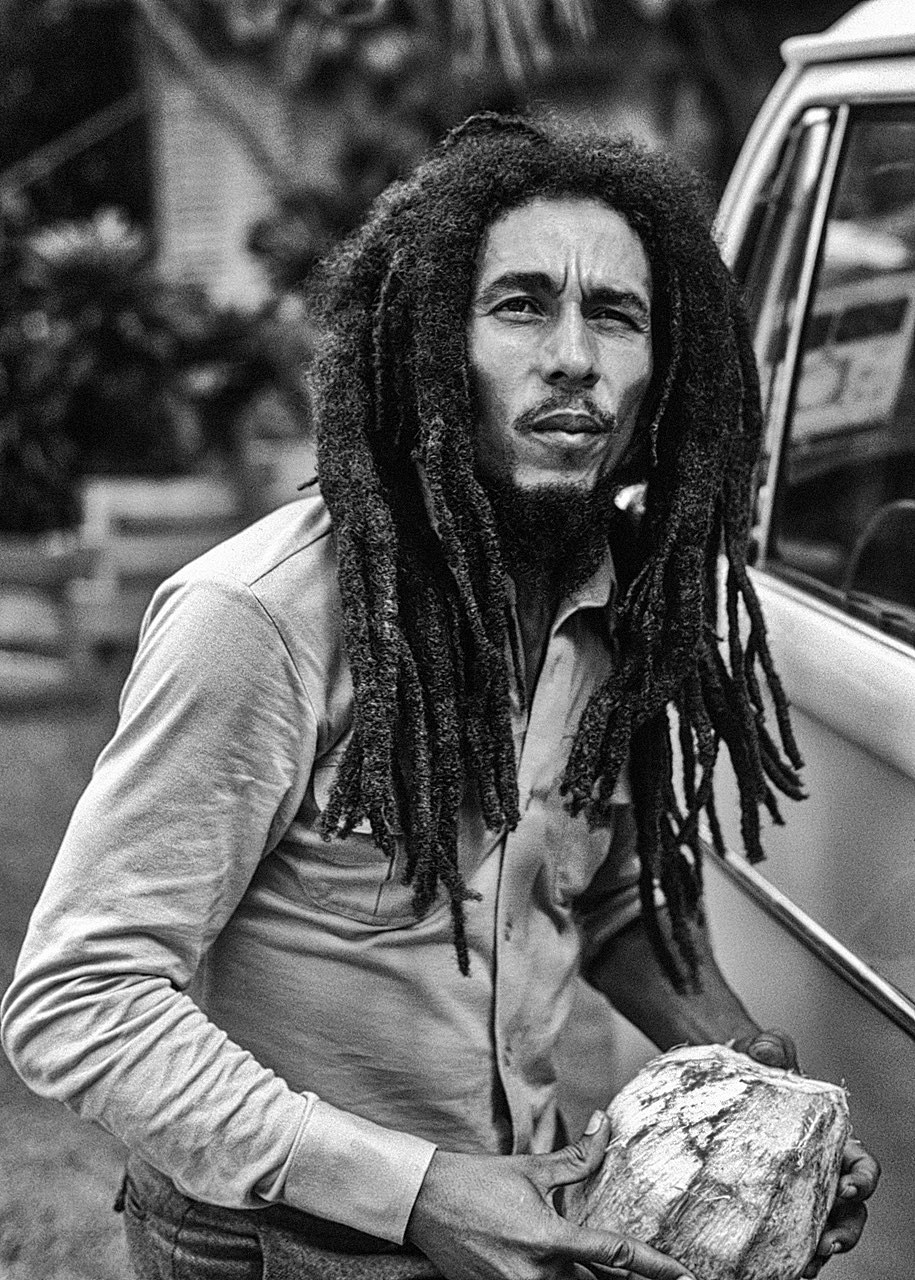
[Denis O’Regan/West Contemporary Editions]
I’d flown out to Jamaica to photograph him and some other people appearing at the Reggae Sunsplash Festival. I arrived with the journalist to the hotel lobby. She went up to do the interview, came down and told me to go up and do the pictures. So I knocked on the door, and he goes, “What do you want? I ain’t doing no pictures.” He obviously hadn’t been told I was coming. I got really annoyed, so I said, “Look, I’ve flown 5,000 miles to come down here, and you’ve kept me waiting in the lobby for two hours.” All his friends were in the room. It had been a real party atmosphere, and it just went silent. Then he paused before saying, “Eh, do all the pictures you want!” He loved the fact that I’d taken him on, which wasn’t even really the plan. I was just seething that I’d made such a trip. He was in a really good mood after that and invited me out to a beach party with his son, Ziggy, and the whole clan. This [photo] was on the way. That’s his yellow Volkswagen Kombi van, and he had this coconut. They were all chopping up coconuts in the room.”
David Bowie (1983)
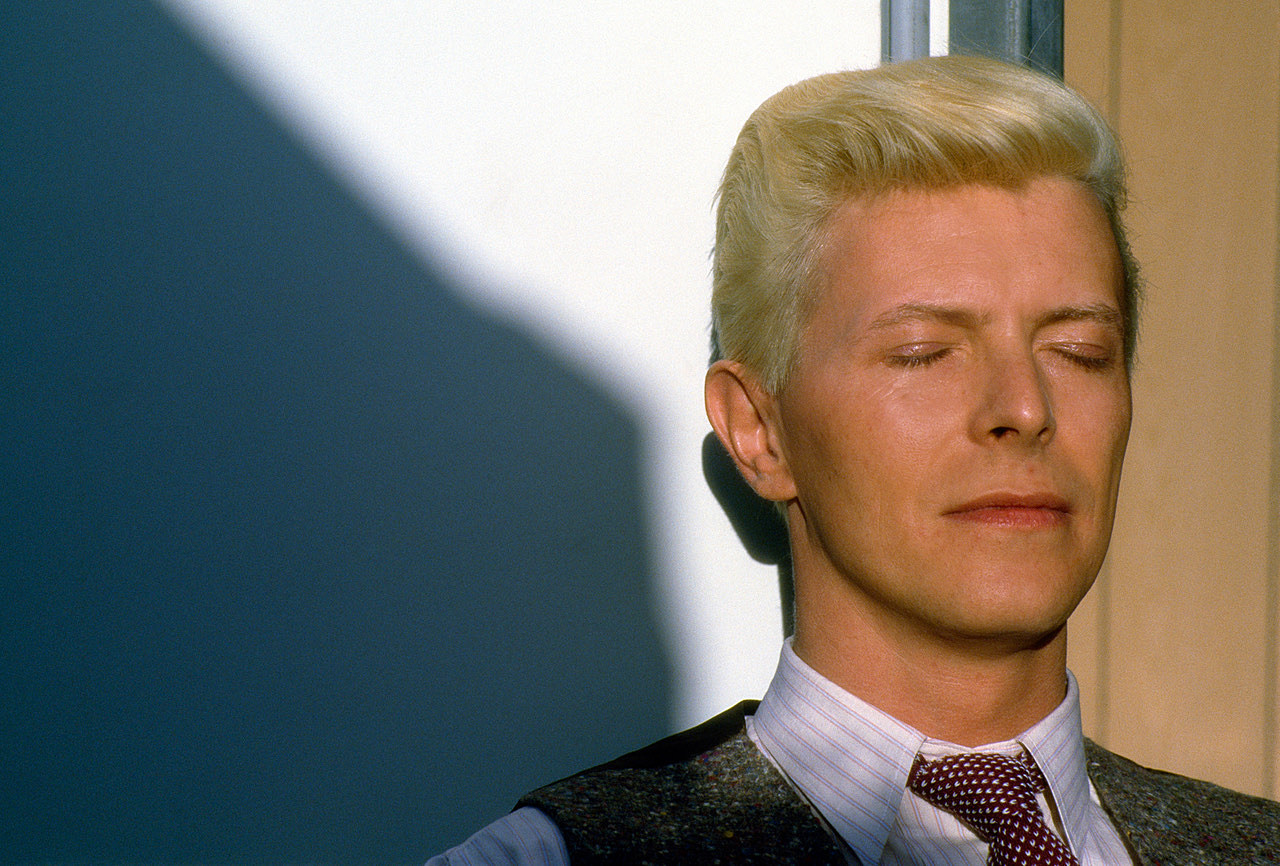
[Denis O’Regan/West Contemporary Editions]
This was in Australia. It was about seven months into the eight-month tour, so we knew each other really well by now. The dressing rooms were all port-a cabins. There wasn’t much in the way of luxury. He just parked himself on a chair in the last embers of the day, as the sun went down before the show. Because I was around all the time and had total access, to him I wasn’t really there. There was a select group of people in the touring party like security, wardrobe, makeup, me, the accountant, the manager who moved around with him, and we were basically invisible. We were like part of the furniture. So the fact I was taking pictures as he was having a little snooze made no difference to him.
He loved being photographed. I wanted to shoot David in a big way, so when I saw he was doing a tour, I approached the producers, one of whom had worked on the Rolling Stones tour I worked on the year before, and said I wanted to do it. They said I had to come up with a proposal to pass on to David, so I suggested we do a book, and the advance would recoup the cost of taking me around the world. David was very into the idea of the book. He loved the idea of being documented all the time, in ways that he’d never been seen before. Now people are used to the number of pictures of David that are around, but prior to this, he had been quite enigmatic. No one had ever documented him day after day.
David Bowie (1983)
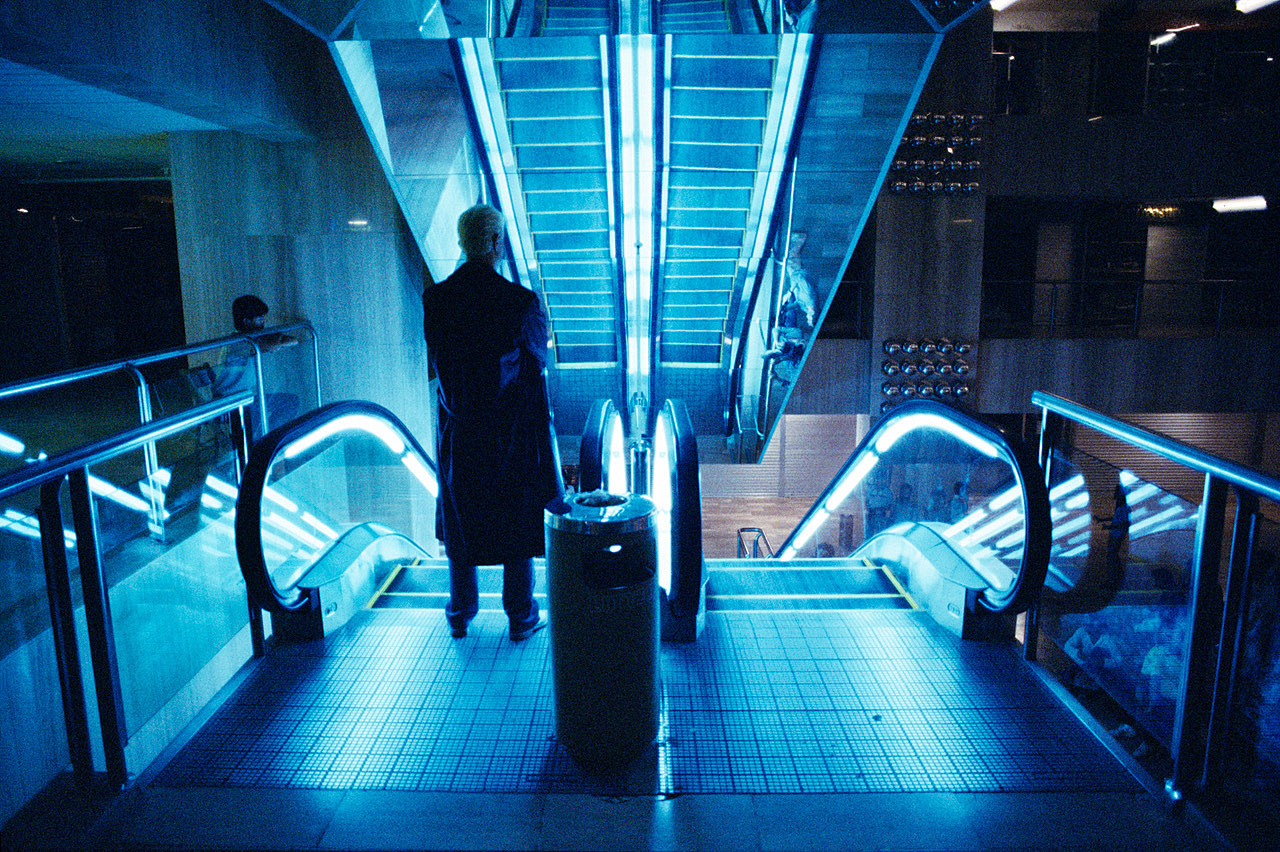
[Denis O’Regan/West Contemporary Editions]
This has sort of a Blade Runner feel to it. After the tour had ended, there was an additional trip to Southeast Asia, which was documented for a short film. This was taken in a Singapore shopping mall at night. We were just wandering around. David stood there, and I grabbed the shot. It was featured a lot in the Moonage Daydream film. When the director [Brett Morgen] spotted this image at a David Bowie convention I was at a few years ago, he was in shock because he’d been working with the film footage of this scene for years.
When I arrived on the tour, all I’d known of David was this thin, white Ziggy Stardust character, very removed, very cold and enigmatic. When I met him, he was the opposite — warm, funny, inviting. And he wanted me to cover him as much as possible. The entire tour, it was all, “Take this, take this. Shoot this! Let’s do this. Where’s Denis?” Not what I expected.
Mick Jagger and David Bowie (1987)
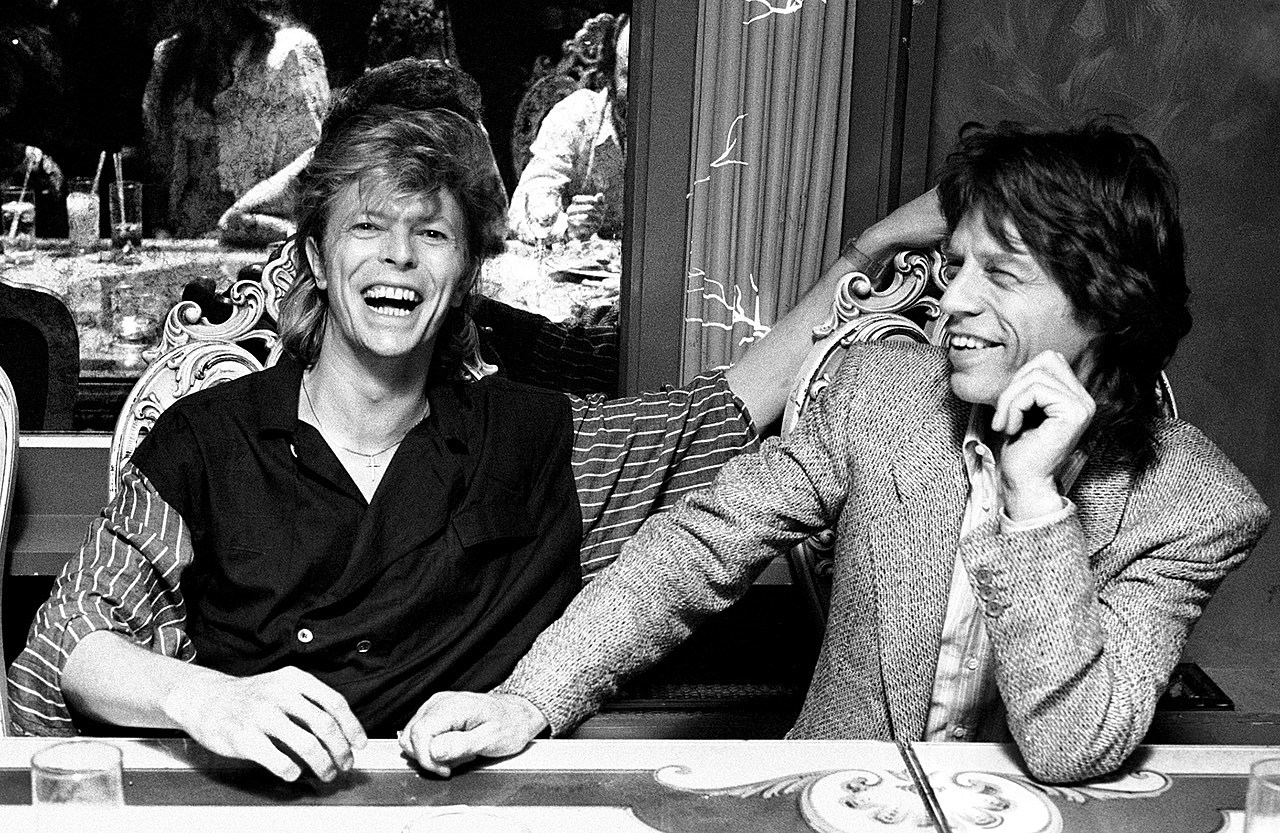
[Denis O’Regan/West Contemporary Editions]
Mick tweeted this shot after David died. It was taken at Bill Stickers, a club in Soho. It was the after-party from the Glass Spider tour show at Wembley Stadium in 1987. It’s just two old friends having fun. It’s part of a sequence where they were chatting, I arrived, David goes, “Here’s Denis,” and he laughed. Then within a minute, a paparazzi photographer came in through the blue window. David got up and walked across that table to grab him. I grabbed David to hold him back, and that guy got thrown out. So it went from this laughing moment to almost a fight in minutes. A few years ago, that photographer held an exhibition in Norfolk and included a photo he must have gotten before he was thrown out.
David really didn’t like that side of fame, with paparazzi and whatnot. He was wealthy, but he didn’t really live like a rock star. He often drove himself around, and on tour, he always wanted town cars. He would send back a limo if it showed up, as it just wasn’t the way he wanted to live. He was very low-key.
Freddie Mercury (1986)
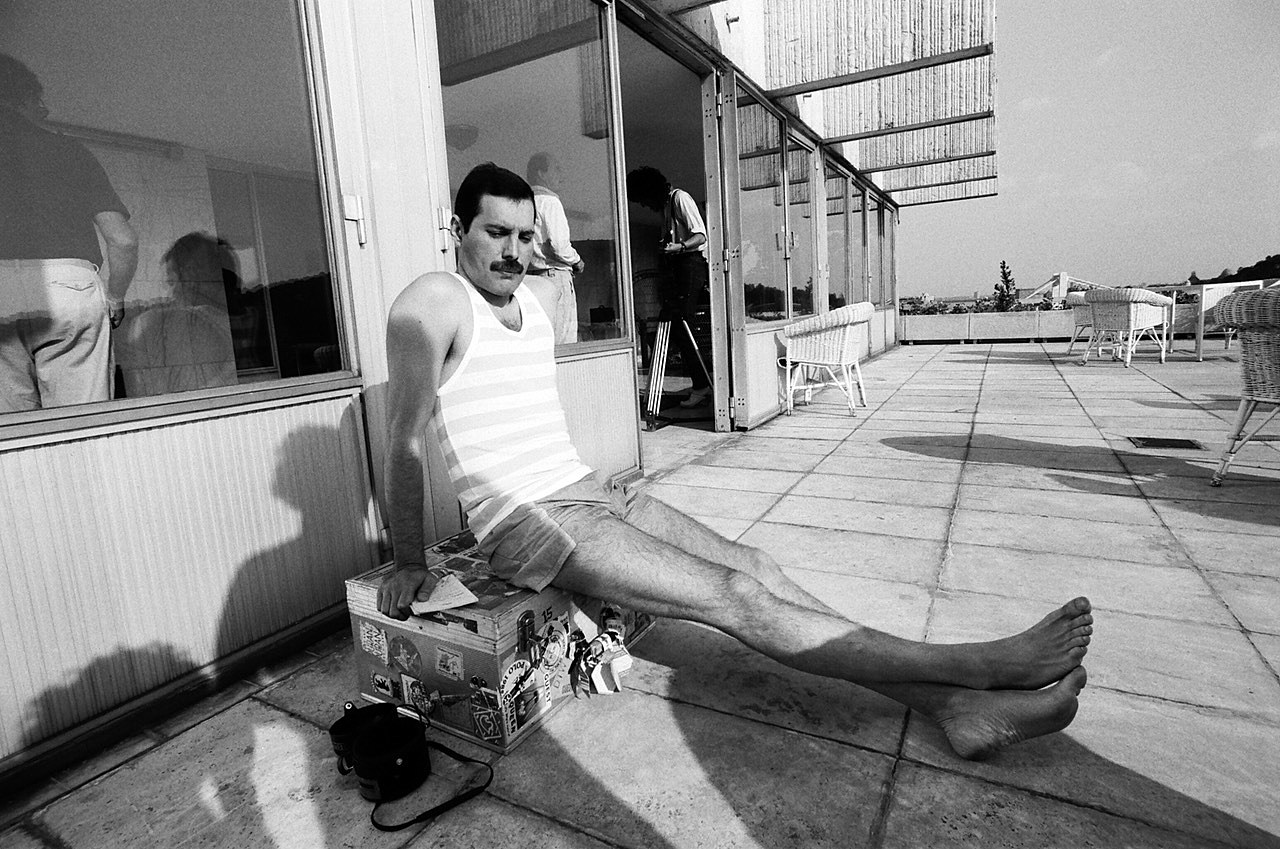
[Denis O’Regan/West Contemporary Editions]
I wouldn’t usually show my equipment in the background of photos, but Freddie decided he was going to sit down on my camera case here, so I had no option. You can see his little notebook. He was making notes for a folk song he was going to sing at the show that night in Budapest. This was on his terrace, overlooking the Danube [River]. You can see one of the bridges on the end of the terrace, and in the background, inside the room, is Brian May rehearsing and their manager, Jim Beach. It was just a relaxed period in the afternoon. He wrote some of those lyrics on his hand so that when he did the Freddie thing onstage with his arm out, he was actually reading the lyrics of the song. It went down well with the fans.
They were one of the rare bands who always stayed behind backstage after a show. Most acts would leave with a police escort and be in the hotel within half an hour. Queen would always stay behind to socialize with each other and have dinner at the venue. I didn’t see him as much socially as the others because afterwards, the rest of the band would go their way, and because he was gay, so he would go out to clubs. The band knew that. I think it’s why they used to stay at the venue so they could all hang out before separating. It must have been difficult living a double life, but it didn’t come across because he was always happy and fun. He’s the sort of person who was lonely and needed people around him all the time. He had his coterie who lived virtually at his house in London, and they were always there. He didn’t like being away from home. He was sweet and very soft and shy offstage. Outrageous at times, but shy. There were two people, really: Freddie Mercury, onstage, and Fred, which is what everyone really called him. He referred to me as Doris, which I didn’t know, but Brian told me after he died.
They really lost America when they did the “I Want To Break Free” video, which was based on Coronation Street. We all thought it was funny, but the Americans really didn’t. It went right over their heads. That was the end of the Queen in America. And he said, “I’m not going to go back there and work my way up again.” They’re one of the only bands that were so big around the world that they almost didn’t need America.
Kate Bush (1980)
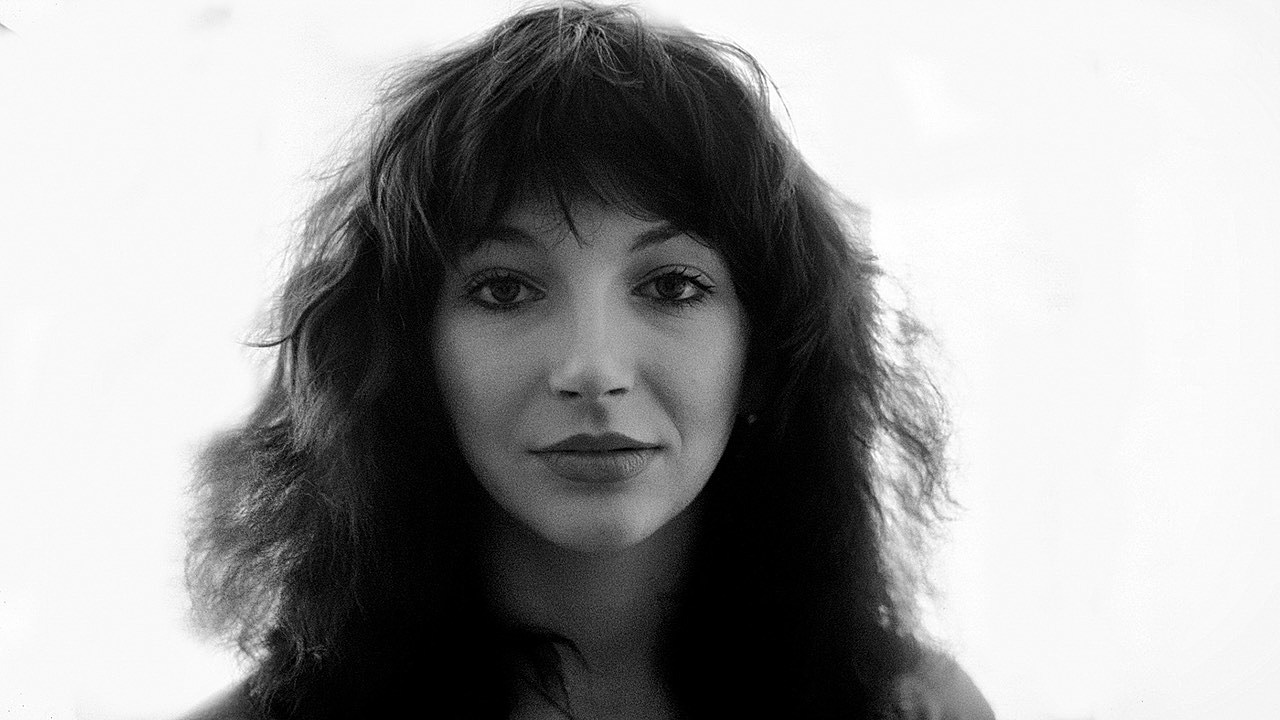
[Denis O’Regan/West Contemporary Editions]
This was taken at her record company. I asked her to stand with a light behind her, which was kind of unusual, and she asked why. I said, “I prefer to shoot into the light.” From then on, every album she released, she used to leave me a copy with a message saying “Keep shooting into the light.” That was very sweet. I did once tell her I had a bone to pick with her: It was the fact that she didn’t allow photographers to capture her first tour, which I really wanted to shoot because, to me, she was a female David Bowie. The closest any woman came to him in terms of songwriting anyway. When you look at her hits, they could have been released 40 years later and not sound dated. She was that far ahead. She’s another performer who’s particularly extravagant and outgoing onstage but shy in person. Bowie, Freddie, Kate — they were all quite shy.
Kylie Minogue (1998)
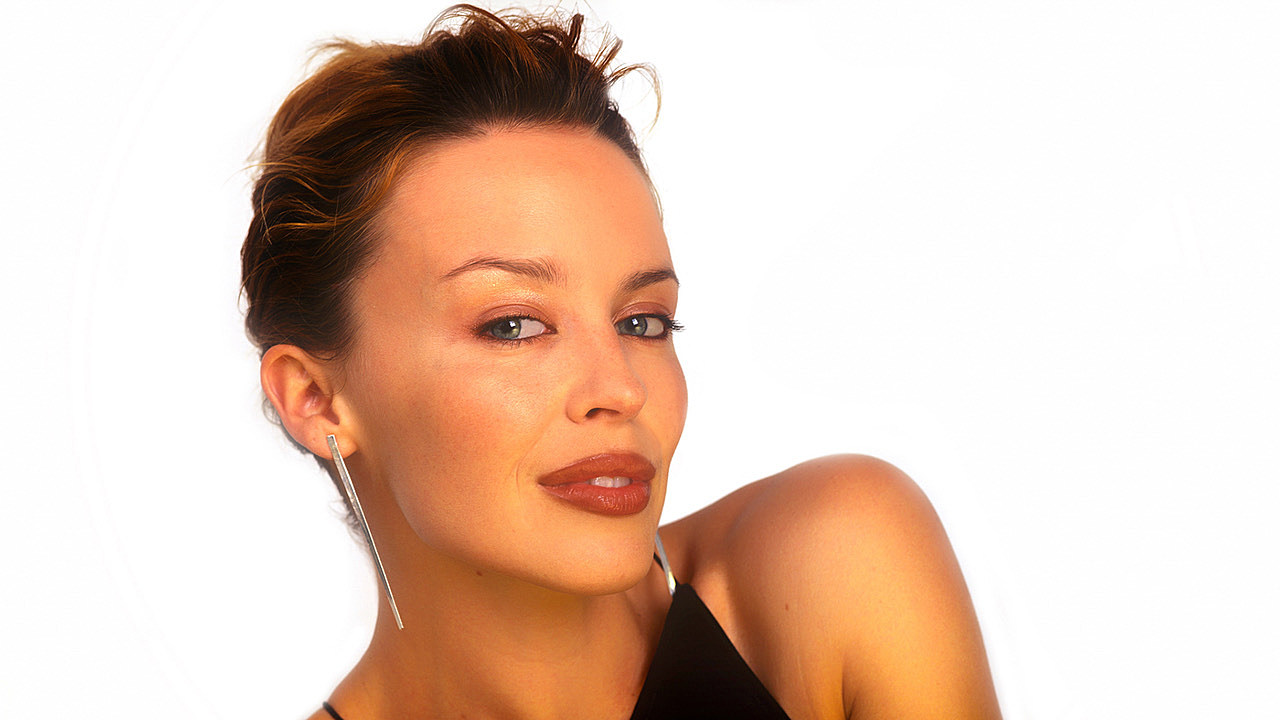
[Denis O’Regan/West Contemporary Editions]
An album had been recorded of covers of Cole Porter by Elton John, Robbie Williams, Kylie, Paul McCartney and other big people. There was a concert in the Park Lane hotel, and a few of them appeared at the concert, like Elton John. I did a deal with OK! magazine to set up a studio backstage and grab these people to do a big spread. My assistant said that Kylie Minogue was in the audience. So, he went out and brought her back, so these hadn’t been planned at all. She was very sweet about it and good at being photographed — she just got straight into posing. I have to say that I did some work for her in post, as she obviously wasn’t prepared to be photographed. She definitely had some lipstick and stuff on, but I brightened her eyes a bit, which were decidedly bloodshot, as she’d probably been partying.
Mick Jagger (2002)
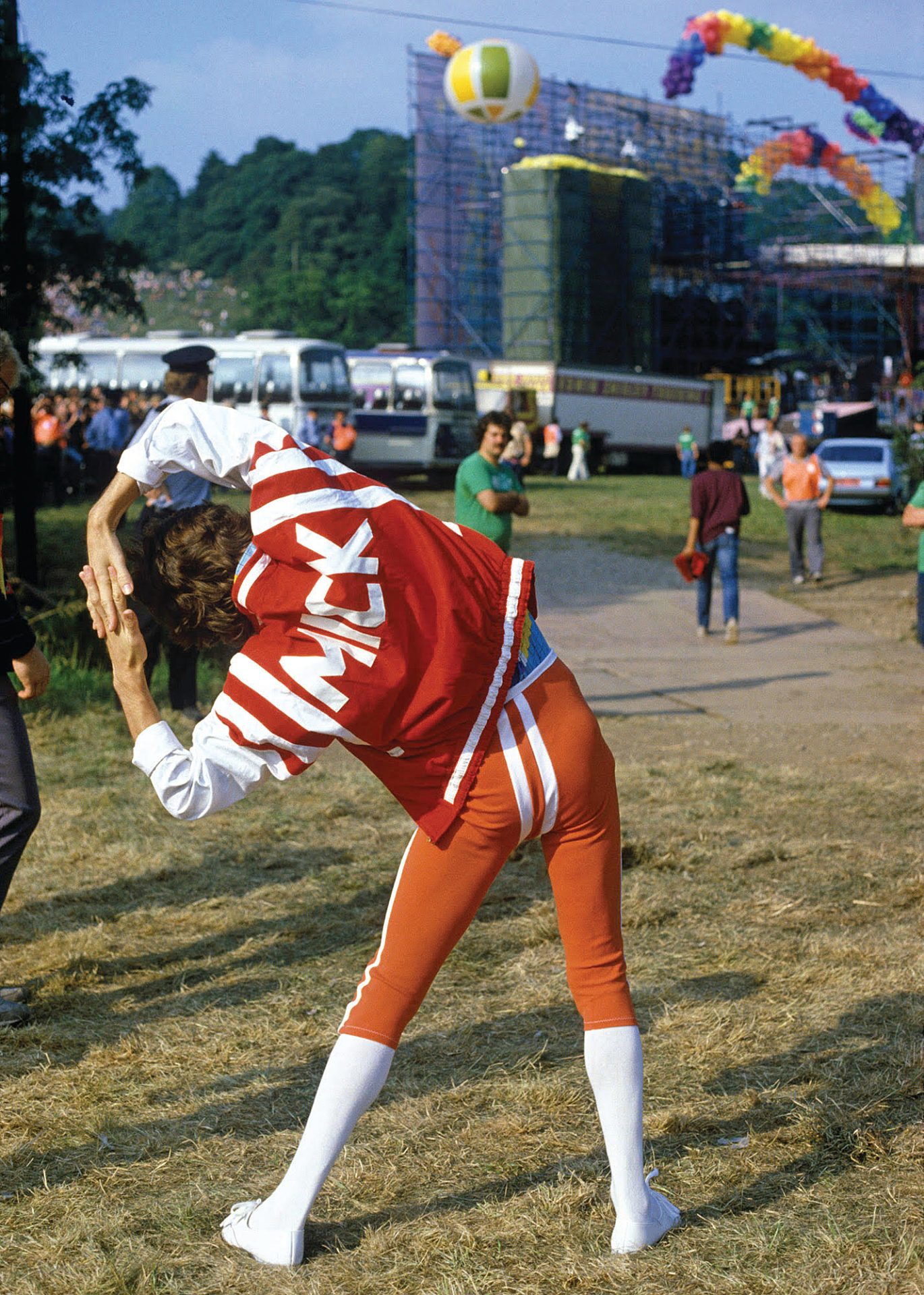
[Denis O’Regan/West Contemporary Editions]
This is at Slane Castle; you can see the stage just ahead. Mick’s dad was a keep-fit instructor. He grew up training. I know he’s trained every single day with a private trainer for the last 30 years because I know the trainer. That’s why he’s as fit and skinny as he is. He’s got the same waist he had in his 20s. It’s just ridiculous. So before the show, he would go through a series of exercises — this is one of those. I like it, of course, because he’s got “MICK” on his back. I just thought it was funny. Mick and Keith were interviewed once for a Martin Scorsese film, and they were asked what they do on the day of a show. Mick says, “Well, get up, go for a run, do my exercises, buy some fruit juice, etc.,” and Keith just said, “I get up.”
Mick was awaiting the opening music that preceded “Ladies and gentlemen, the greatest rock ‘n’ roll band in the world, the Rolling Stones.” As the scrim opened, Mick jogged to the front of the stage to the opening bars of “Under My Thumb” and the roar of the crowd.
